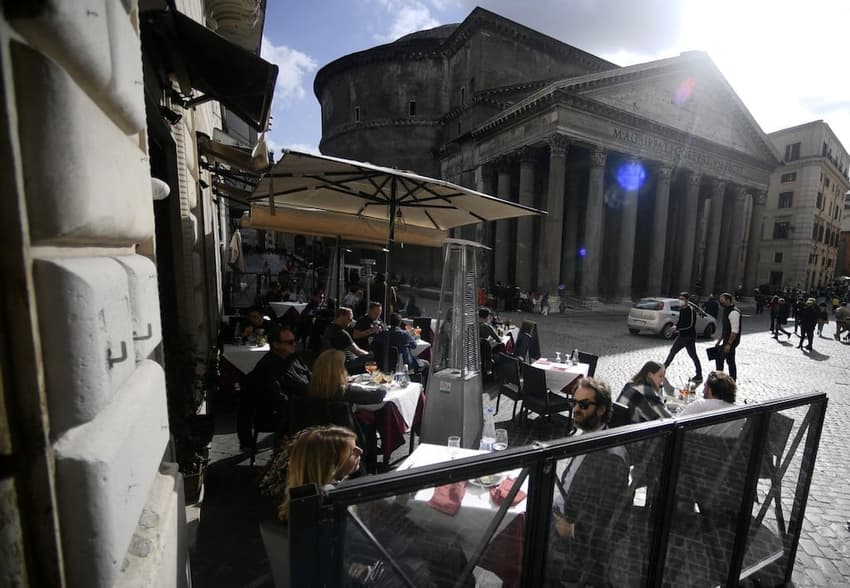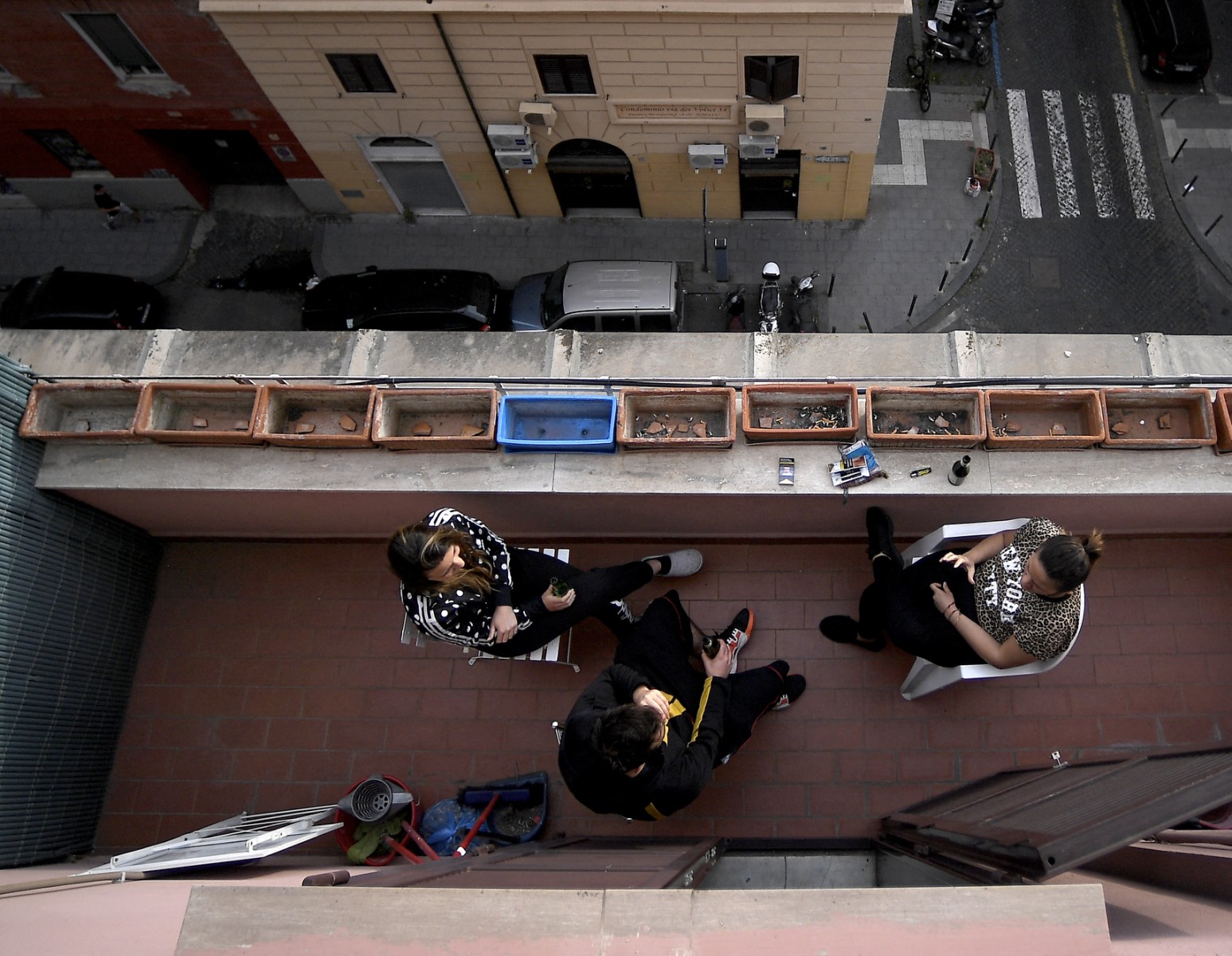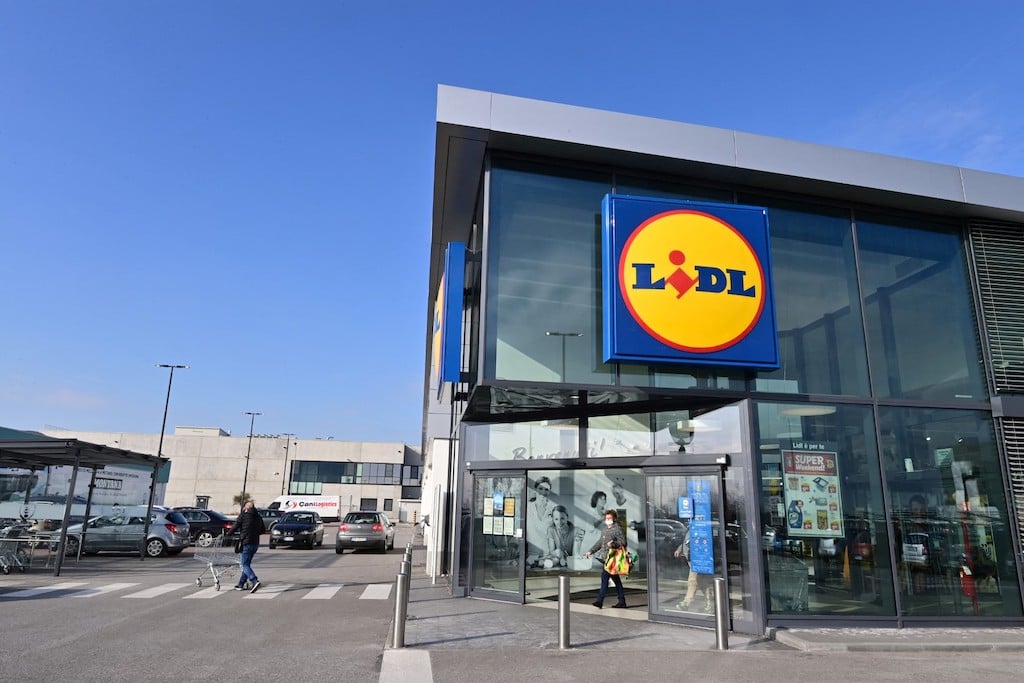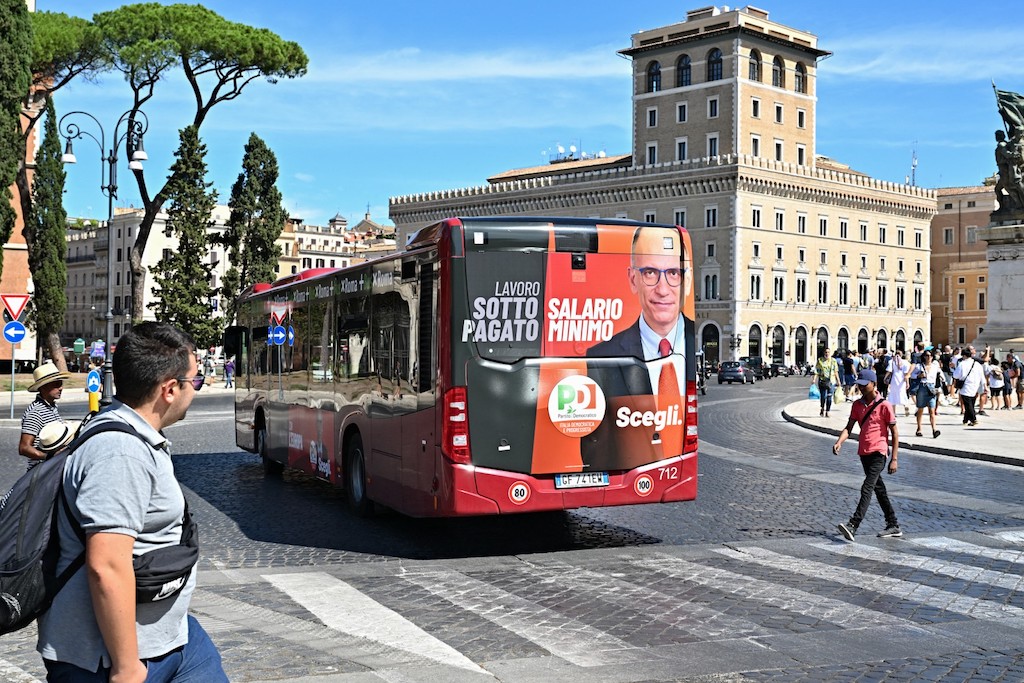Moving to Italy: How much does it cost to live in Rome in 2024?

Rome attracts the highest number of English-speaking foreign residents of any Italian city. But how much does it cost to live in the the Italian capital?
With its sunny climate, high concentration of government and international institutions, and cultural cachet, Rome is the most popular Italian city for English-speaking foreign residents.
According to the latest available data from the start of 2022, the Italian capital is home to as many as 378,882 foreign nationals, who make up around 13.5 percent of the city’s total population.
Around 6,900 of those are anglophones, with Brits (3,200 residents) and Americans (2,400) being the largest communities.
But, like most of the rest of Europe, the cost of living in Rome has risen over the past couple of years as a result of post-pandemic inflation and Russia's war on Ukraine, putting pressure on residents' budgets.
So how much does it actually cost to live in the Eternal City?
Rent
Rents in Rome aren't as high as those you'll find the economic powerhouse of Milan; they average a little over €15 per square metre per month, compared to Milan's €22, making the latter almost 50 percent more expensive.
That doesn't mean rental costs in Rome haven't increased in recent years, however: according to data from the rental portal immobiliare.it, average prices rose by 8.5 percent between 2021 and 2023.
READ ALSO: Reader question: How can I find an apartment to rent in Rome?
The average monthly cost of a 50msq, one-bedroom apartment in the Italian capital is €824 - rising to €988 a month for a 60msq, two-bedroom apartment.
If you want somewhere near the city centre, though, you'll pay significantly more: as much as €24.77 per square metre, translating to just under €1,240 for a one-bed apartment or €1,490 for a two-bed.
To see which areas of the city are cheaper when it comes to rent, take a look at this online map.

Rents in Rome have risen slowly but steadily in the past couple of years. Photo by Filippo MONTEFORTE / AFP.
Bills
In the case of most tenancy agreements in Italy, utility bills are not included in the rent.
Though bills are naturally dependent upon a household’s individual expenditure, monthly bollette – these include gas, electricity and water bills plus waste collection fees – for an 85-square-metre flat in Rome are estimated to add up to an average of €227.
A recent survey by the consumer rights association Assoutenti found that gas bills in Rome are the highest of any Italian city - around €2,046 a year, compared to €1,817 in Milan.
Groceries
The average Rome family spends around €400 a month on groceries, according to estimates from online investment advisor Moneyfarm.
That's a little less than in Milan, where the average family spends around €450 per months.
READ ALSO: Six essential apps that make life in Rome easier for foreign residents
A 2023 survey by the consumer rights association Codacons found that the cost of basic goods isn't necessarily cheaper in southern Italian cities than in the north, however.
While items like bread, olive oil and meat were more expensive in Milan than in Rome, pasta, milk and flour cost slightly more in the Italian capital.

The cost of groceries in Italy will vary depending on where in the country you live. Photo by Miguel MEDINA / AFP.
Eating out
Rome residents enjoy dining out, with most locals indulging in a restaurant dinner at least once a week.
As in most major cities, the size of your bill will largely depend not just on the type of restaurant you choose but also on its location.
A three-course meal for two people in a mid-range city restaurant will set you back €65 on average, according to estimates from the cost of living site Numbeo, while a single-course meal in an inexpensive restaurant comes at around €15 per person.
A cappuccino in the city costs an average of €1.53 – that’s just three cents over Italy’s national average (€1.56) – while a 0,33-litre bottle of foreign beer costs €4 on average.
Going out, leisure and entertainment
The Italian capital has a wealth of cultural activities on offer, from museums to historic sites and art exhibitions to theatrical and musical performances.
Rome residents can benefit from the MIC card, which costs just €5 per year and offers the holder free access to all city-owned museums and galleries.
The cost of leisure activities will depend upon what you choose to do and where, though prices are generally in line with those of other major Italian cities.
For instance, a regular cinema ticket costs around €10, whereas a monthly membership at a sports club comes at an average price of just over €60.

Italy's public transport services are relatively affordable. Photo by Andreas SOLARO / AFP.
Transport
Public transport in Rome is fairly affordable - if not renowned for its reliability.
For €1.50, you can make an unlimited number of bus and tram journeys, and one metro trip, for up to 100 minutes, paying by paper ticket, app or contactless card.
In addition to the 100-minute ticket, you can get a 24 hour, 48 hour, or 72 hour pass, for €7, €12.50 and €18 respectively, or a seven-day pass for €24.
A monthly urban pass with ATAC, Rome's public transport operator, costs €35, while an annual pass goes for €250.
There are discounts available for children, families, pensioners, students, the unemployed, and people with disabilities.
Parking costs between €1 and €1.20 per hour, or €4 for up to 8 hours - though Rome's heavy traffic congestion may give you pause about driving in the city centre at peak times.
Rome's mayor Roberto Gualtieri has made an effort to ease pressure on traffic in the city in recent years, introducing free public transport days over the Christmas period.
Comments (2)
See Also
With its sunny climate, high concentration of government and international institutions, and cultural cachet, Rome is the most popular Italian city for English-speaking foreign residents.
According to the latest available data from the start of 2022, the Italian capital is home to as many as 378,882 foreign nationals, who make up around 13.5 percent of the city’s total population.
Around 6,900 of those are anglophones, with Brits (3,200 residents) and Americans (2,400) being the largest communities.
But, like most of the rest of Europe, the cost of living in Rome has risen over the past couple of years as a result of post-pandemic inflation and Russia's war on Ukraine, putting pressure on residents' budgets.
So how much does it actually cost to live in the Eternal City?
Rent
Rents in Rome aren't as high as those you'll find the economic powerhouse of Milan; they average a little over €15 per square metre per month, compared to Milan's €22, making the latter almost 50 percent more expensive.
That doesn't mean rental costs in Rome haven't increased in recent years, however: according to data from the rental portal immobiliare.it, average prices rose by 8.5 percent between 2021 and 2023.
READ ALSO: Reader question: How can I find an apartment to rent in Rome?
The average monthly cost of a 50msq, one-bedroom apartment in the Italian capital is €824 - rising to €988 a month for a 60msq, two-bedroom apartment.
If you want somewhere near the city centre, though, you'll pay significantly more: as much as €24.77 per square metre, translating to just under €1,240 for a one-bed apartment or €1,490 for a two-bed.
To see which areas of the city are cheaper when it comes to rent, take a look at this online map.

Bills
In the case of most tenancy agreements in Italy, utility bills are not included in the rent.
Though bills are naturally dependent upon a household’s individual expenditure, monthly bollette – these include gas, electricity and water bills plus waste collection fees – for an 85-square-metre flat in Rome are estimated to add up to an average of €227.
A recent survey by the consumer rights association Assoutenti found that gas bills in Rome are the highest of any Italian city - around €2,046 a year, compared to €1,817 in Milan.
Groceries
The average Rome family spends around €400 a month on groceries, according to estimates from online investment advisor Moneyfarm.
That's a little less than in Milan, where the average family spends around €450 per months.
READ ALSO: Six essential apps that make life in Rome easier for foreign residents
A 2023 survey by the consumer rights association Codacons found that the cost of basic goods isn't necessarily cheaper in southern Italian cities than in the north, however.
While items like bread, olive oil and meat were more expensive in Milan than in Rome, pasta, milk and flour cost slightly more in the Italian capital.

Eating out
Rome residents enjoy dining out, with most locals indulging in a restaurant dinner at least once a week.
As in most major cities, the size of your bill will largely depend not just on the type of restaurant you choose but also on its location.
A three-course meal for two people in a mid-range city restaurant will set you back €65 on average, according to estimates from the cost of living site Numbeo, while a single-course meal in an inexpensive restaurant comes at around €15 per person.
A cappuccino in the city costs an average of €1.53 – that’s just three cents over Italy’s national average (€1.56) – while a 0,33-litre bottle of foreign beer costs €4 on average.
Going out, leisure and entertainment
The Italian capital has a wealth of cultural activities on offer, from museums to historic sites and art exhibitions to theatrical and musical performances.
Rome residents can benefit from the MIC card, which costs just €5 per year and offers the holder free access to all city-owned museums and galleries.
The cost of leisure activities will depend upon what you choose to do and where, though prices are generally in line with those of other major Italian cities.
For instance, a regular cinema ticket costs around €10, whereas a monthly membership at a sports club comes at an average price of just over €60.

Transport
Public transport in Rome is fairly affordable - if not renowned for its reliability.
For €1.50, you can make an unlimited number of bus and tram journeys, and one metro trip, for up to 100 minutes, paying by paper ticket, app or contactless card.
In addition to the 100-minute ticket, you can get a 24 hour, 48 hour, or 72 hour pass, for €7, €12.50 and €18 respectively, or a seven-day pass for €24.
A monthly urban pass with ATAC, Rome's public transport operator, costs €35, while an annual pass goes for €250.
There are discounts available for children, families, pensioners, students, the unemployed, and people with disabilities.
Parking costs between €1 and €1.20 per hour, or €4 for up to 8 hours - though Rome's heavy traffic congestion may give you pause about driving in the city centre at peak times.
Rome's mayor Roberto Gualtieri has made an effort to ease pressure on traffic in the city in recent years, introducing free public transport days over the Christmas period.
Join the conversation in our comments section below. Share your own views and experience and if you have a question or suggestion for our journalists then email us at [email protected].
Please keep comments civil, constructive and on topic – and make sure to read our terms of use before getting involved.
Please log in here to leave a comment.